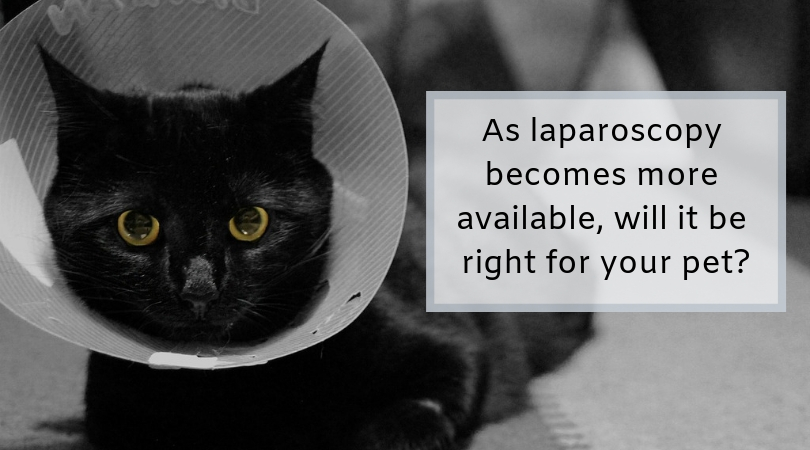Veterinary medicine becomes more sophisticated every year. From routine spay procedures to hernia operations, our dogs and cats are benefiting from medical breakthroughs that are first developed on humans.
One of those breakthroughs is laparoscopy. Laparoscopy is also called “keyhole” surgery because it’s minimally invasive, which means your dog or cat can recover faster. This has become the “gold standard” in human surgical procedures due to its minimal downtime and reduced post-operative pain. Now it’s becoming available for our companion animals.
How Laparoscopy Works
According to TuftsYourDog.com, “It means surgery performed inside the abdomen with thin scopes and instruments inserted through tiny holes so that the abdominal cavity doesn’t have to be opened with a huge incision that then requires numerous stitches once the operation is over.”
Through these tiny incisions, your veterinarian uses a tiny camera to guide the surgical procedure. The camera projects the image to a screen where the surgeon can clearly see the interior organs and use the instruments to complete the procedure. The doctor’s hands never go inside the dog or cat.
This minimally-invasive surgery is used for spay procedures, to remove bladder stones, for organ biopsies, and for other reasons your pet would require medical procedures.
As laparoscopic surgery becomes more available for dogs and cats, it’s worth considering if it’s right for your pet.

Benefits of Laparoscopic Surgery
The benefits of this type of surgery in our pets is the same as in humans. They include:
- A small incision - which means a shorter healing time and less pain. The traditional way of opening up a patient for surgery takes much longer to heal.
- Better visibility - making it easier for the surgeon to see what he or she is doing because the subject is enlarged on a screen.
- Fewer complications and faster recovery from anesthesia
One of the chief reasons pet owners usually choose laparoscopy is because their pets will be in less pain. A 2005 study in the Journal of the American Veterinary Medical Association compared dogs who experienced laparoscopic spay surgery and those who experienced the traditional open surgery. This study found 9 out of the 10 dogs who had traditional surgery needed additional pain medication afterwards. The dogs who experienced the minimally-invasive laparoscopic surgery didn’t require additional pain medication, based on pain scores.
Another benefit is that your dog or cat will heal quicker. We know it can be challenging to keep pets still, so anything that can reduce needed downtime is welcomed by many pet owners.
While laparoscopy has been available in human medicine for quite some time now, it's still not as prevalent for our pets. However, as it does become more commonly available, you may have lots of questions about whether it can help your own best bud. The best thing you can do is discuss your options with your veterinarian. Please feel free to reach out and ask us!

